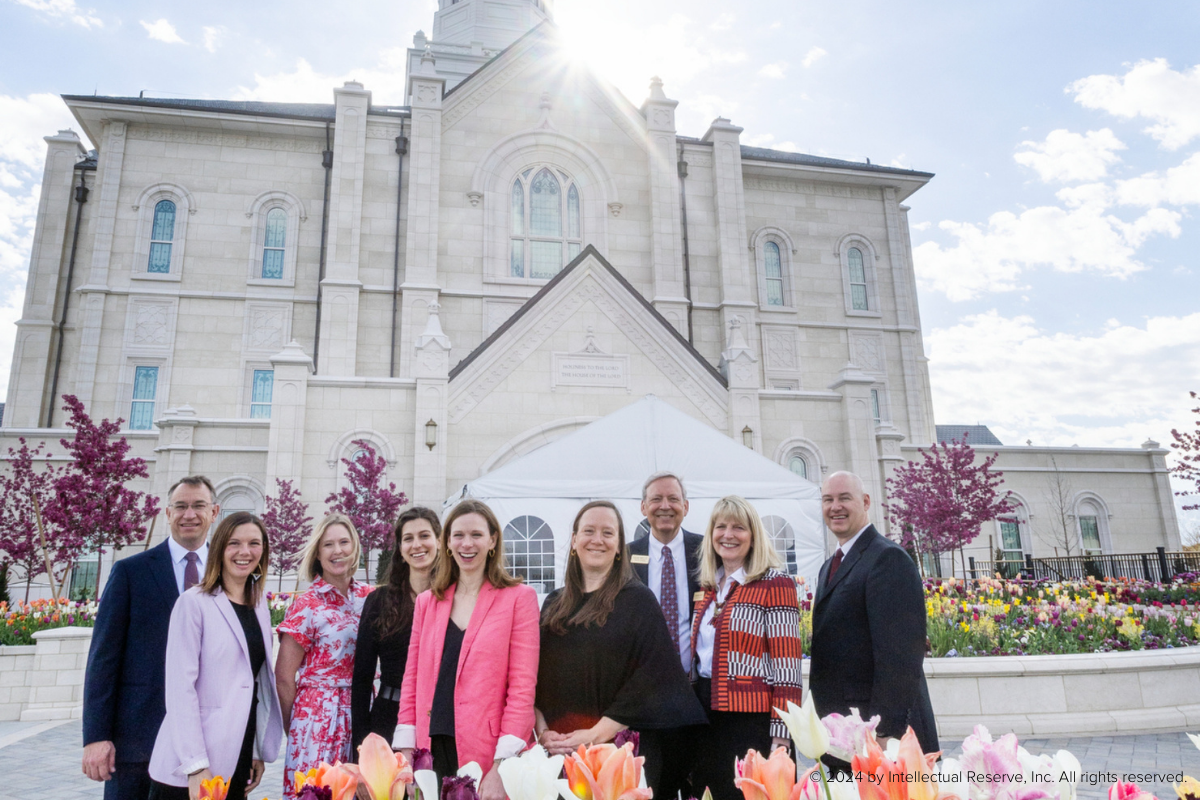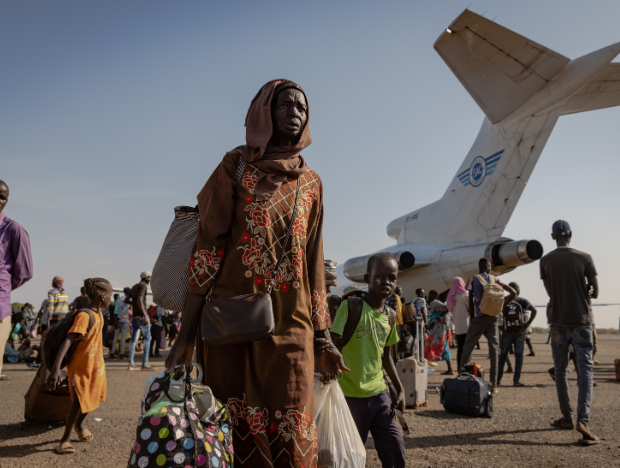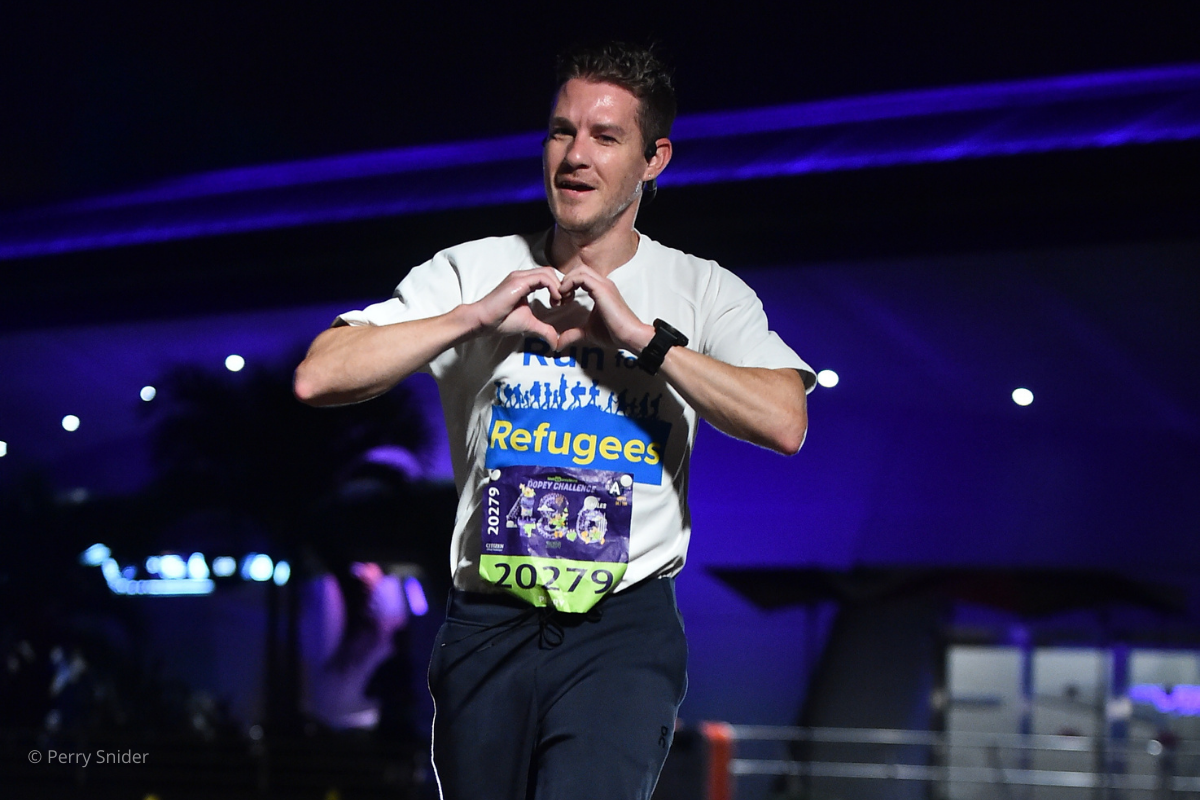What to Know About the Refugee Crisis in Armenia
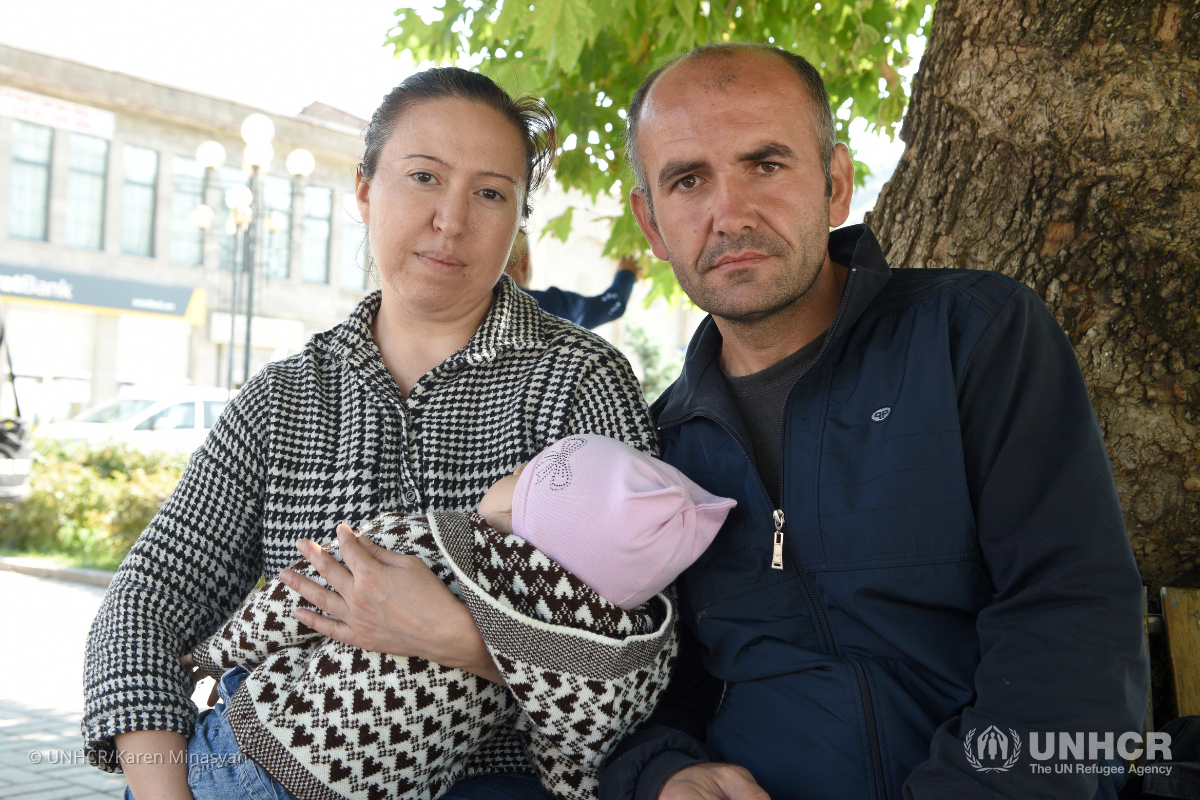
“Now we don’t have anything with us. We spent two unbearable nights on the road to Goris. The children were hungry, but we had neither bread nor water,” says Karen.
Karen and his wife Oksanna were forced to flee their home for Armenia after hostilities in the South Caucasus region renewed — they were among the tens of thousands of refugees that arrived in Armenia in less than a week. Many of the families are fleeing with just the few possessions they can carry and are arriving in Armenia distressed, exhausted, hungry and apprehensive about the future.
Learn more about the refugee crisis in Armenia, the families being impacted by this humanitarian emergency and how UNHCR is providing critical support.
1. When did the refugee crisis in Armenia begin?
2. How many refugees have fled to Armenia?
3. Who is the refugee crisis in Armenia affecting?
4. How is UNHCR supporting the refugee crisis in Armenia?
5. How can you support the refugee crisis in Armenia?
1. When did the refugee crisis in Armenia begin?
Following the escalation of a decades-long conflict in the region at the end of September 2023, more than 100,000 refugees were forced to flee from their homes to Armenia. A majority of refugees are arriving in Goris — a small border town in south-eastern Armenia — where they’re receiving support from humanitarian organizations, including UNHCR. Some families plan on staying in Goris so they can remain close to home, while others like Hovhannes are thinking about moving on.
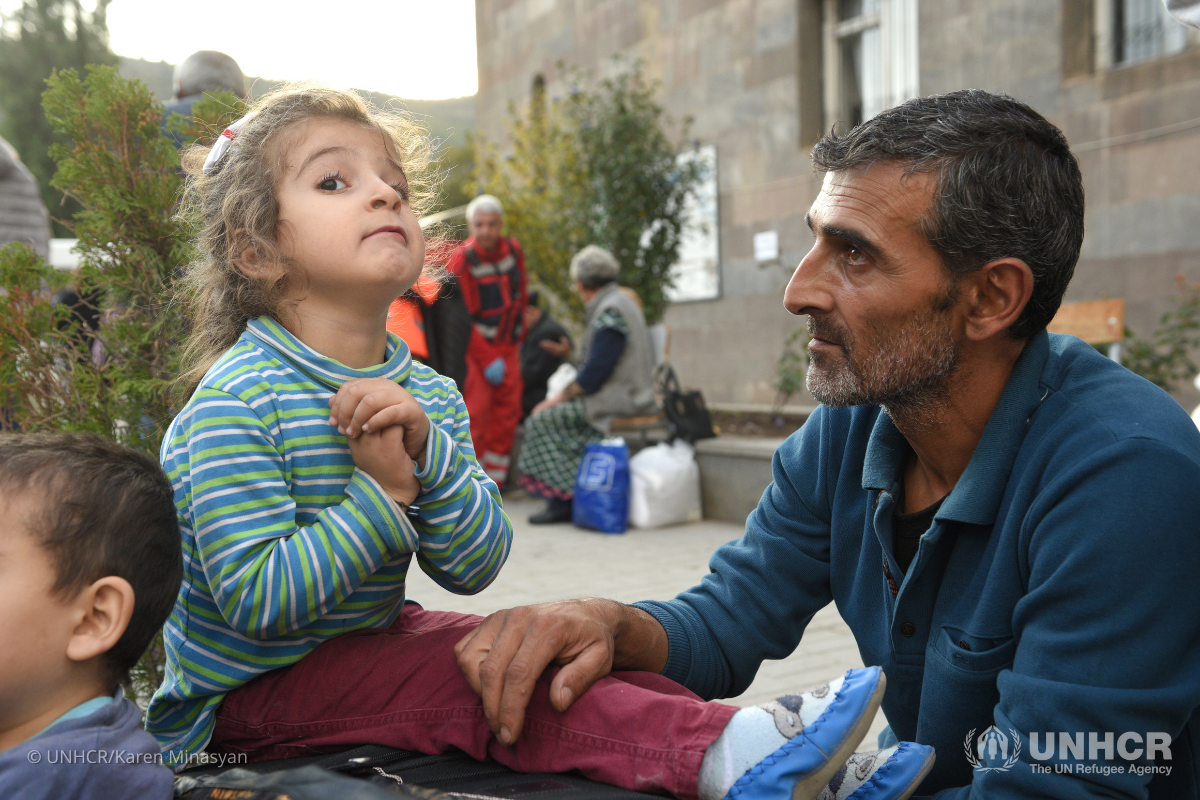
Joining the thousands forced to flee their homes, Hovhannes, his wife and their five children arrived in Goris on September 28, 2023. Two of his children have disabilities and the entire family is in need of safety, shelter and protection.
“It was very difficult to be on the road for two days with children who have disabilities. We had nothing to eat, and the road was hard to cope with,” Hovhannes recalls. “The road that otherwise would take 2 hours, took three days!”
Now, Hovhannes and his family are in Goris and receiving much-needed support from UNHCR and local volunteers.
Although his family found safety and security in Goris for the time being, he would like to continue on and bring his family to Yerevan, the capital of Armenia. “We would like to live in Yerevan so that I can find a decent job, but I am not sure we will be able to find an affordable place to live in Yerevan. And then we have to find a solution for our children who have disabilities.”
2. How many refugees have fled to Armenia?
As of October 6, 2023, the humanitarian emergency in the South Caucasus has forced more than 100,600 refugees to flee to Armenia. An average of 15,000 people are arriving per day, with a peak of 40,000 refugees entering the country on September 27, 2023. The total number of new arrivals now constitutes 3.3 percent of the entire Armenian population (2.8 million), or 1 in 30 people. Before this crisis, there were already 35,000 refugees, asylum seekers and stateless people of other nationalities living in Armenia.
After arriving in Armenia, many refugees are settling in areas where they have family, access to services and feel supported. Refugees are now located in different regions in Armenia with a majority residing in the capital, Yerevan (43 percent), followed by Syunik (15 percent), Kotayk (9 percent) and Ararat (8 percent). Refugees like Anna, who arrived in Goris with her 3-year-old son Erik, plan on staying in the area rather than relocating further away from home.
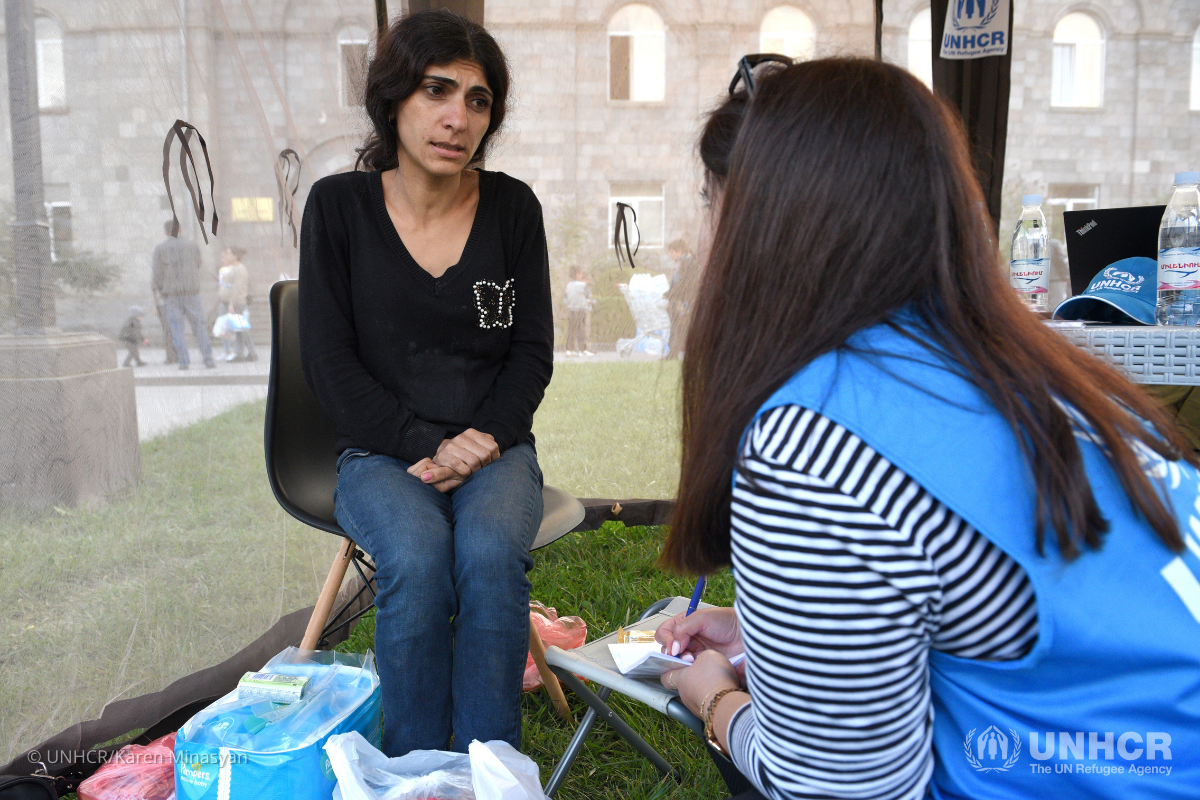
“We were so scared! We were hungry all the way to Armenia, and I had no sweets for my son, and he was crying all the way to Goris,” says Anna. “Please, find a way for me to stay in Goris. I don’t want to live far.”
3. Who is the refugee crisis in Armenia affecting?
The refugees fleeing to Armenia include vulnerable groups such as older people, women and children, pregnant women and newborns, people living with disabilities and people with chronic health conditions. More than half of the refugees are women and girls, approximately 30 percent are children and 18 percent are elderly.
When the emergency began, families were forced to flee their homes at a moment's notice with just the few possessions they could bring, spending several days on the road with very little food and water. On the road to Armenia, Syuzanna and her four children were not just worried about how they would get food — they were worried about the dangerous conditions they could face on the way there.
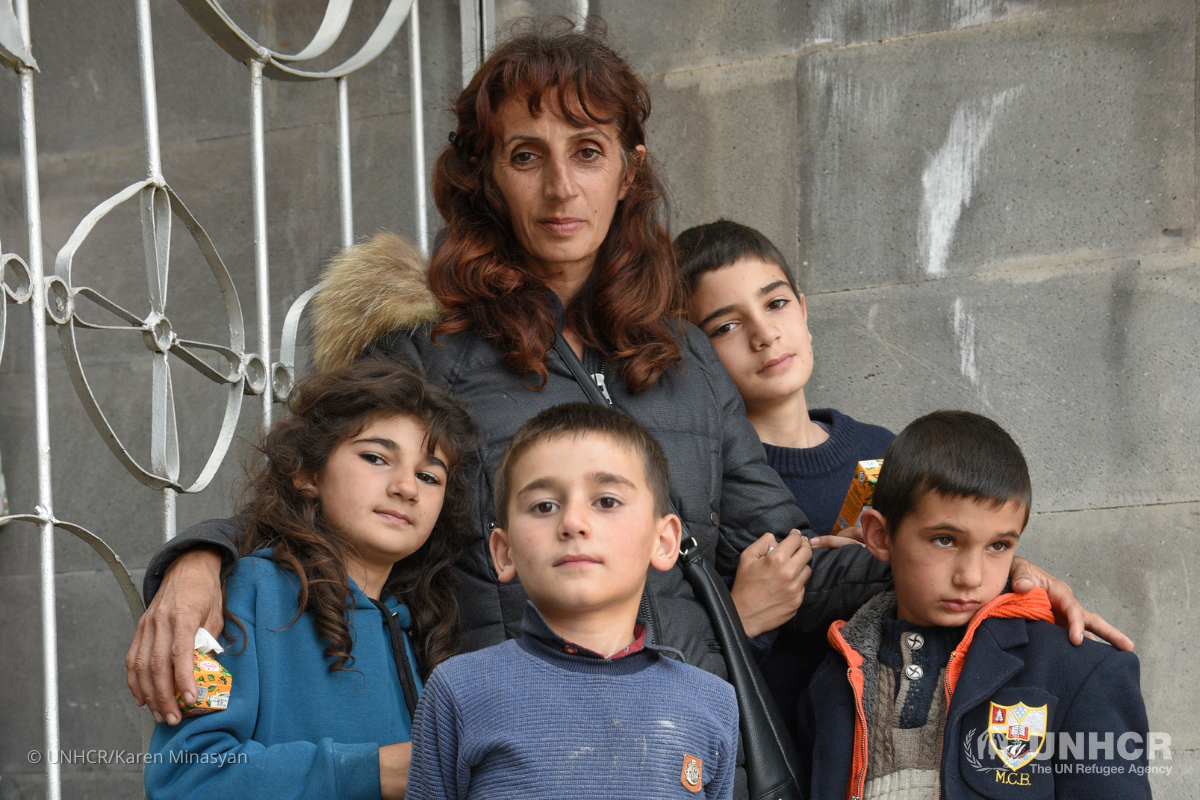
“I cannot explain how hard the road to Goris was. We were praying to God all the way to Armenia. The kids were asking me - ‘Mom, will they shoot in Armenia too?’” Syuzanna recalls.
After experiencing many hardships on the road to Armenia and grappling with the uncertainty of the future, refugees like Syuzanna and her family are now arriving traumatized, exhausted and hungry, and need urgent psychosocial support and emergency assistance, including warm clothes and medicine.
The host community in Armenia has responded to this refugee crisis with unwavering support and generosity. They are lending their support to families in need by volunteering their time and opening their doors to those in need of shelter. National and municipal authorities across the region are actively responding to this crisis as well, working with volunteers, national and local nongovernmental organizations and civil society actors to support those in need.
4. How is UNHCR supporting the refugee crisis in Armenia?
UNHCR is on the ground providing immediate assistance and closely monitoring the situation in Armenia. UNHCR teams are assessing the needs of refugees and providing them with protection, counseling and information. Initial assessments reveal that refugees urgently need food, clothing, accommodation and medicine. UNHCR is also providing technical equipment to facilitate government registration of refugees and new arrivals.
UNHCR is leading the inter-agency refugee response with UN Agencies and humanitarian organizations and finalized the Armenia Emergency Refugee Response Plan (RPP). The joint plan brings together 60 partners and covers relief efforts to support 196,000 people, including 101,000 refugees and 95,000 members of local host communities. UNHCR continues to call for greater international support as the crisis continues.
“We call upon the international community to urgently support refugees and their hosts. Local host communities have generously opened their doors and displayed tremendous solidarity with refugees. The local response, led by national authorities, volunteers and civil society has also been equally remarkable. International support is crucial, however, to sustain this welcome and to enable us to respond to immediate needs and to also build upon the resilience of this population”, said Filippo Grandi, UN High Commissioner for Refugees.
5. How can you support the refugee crisis in Armenia?
In the span of a week, tens of thousands of families in the region were forced to flee from their homes to Armenia. They are arriving in Armenia now traumatized, exhausted and hungry, fearful of what the future holds for their children and family. During this moment of uncertainty, you can provide them with what they need now more than ever — hope for the future. Join USA for UNHCR in supporting refugee families forced to flee and ensure they get the resources and help they need to move forward.
